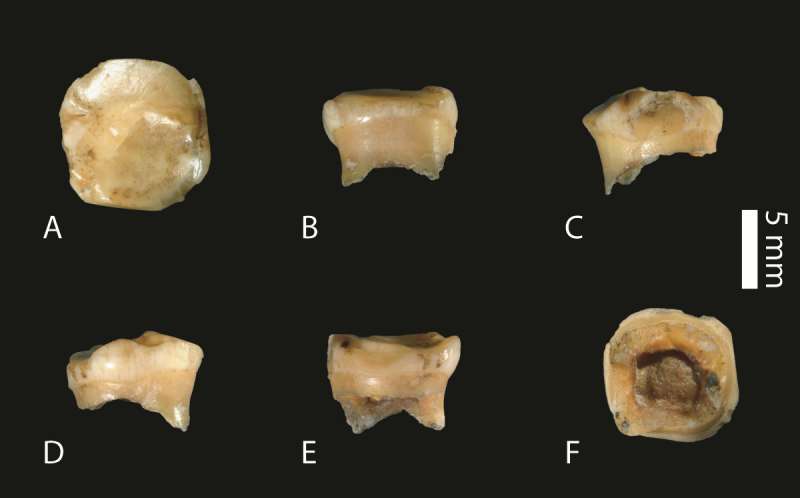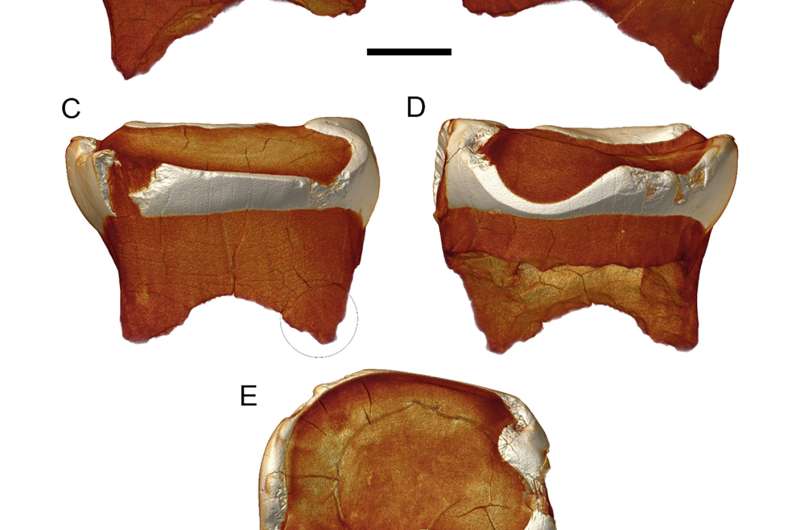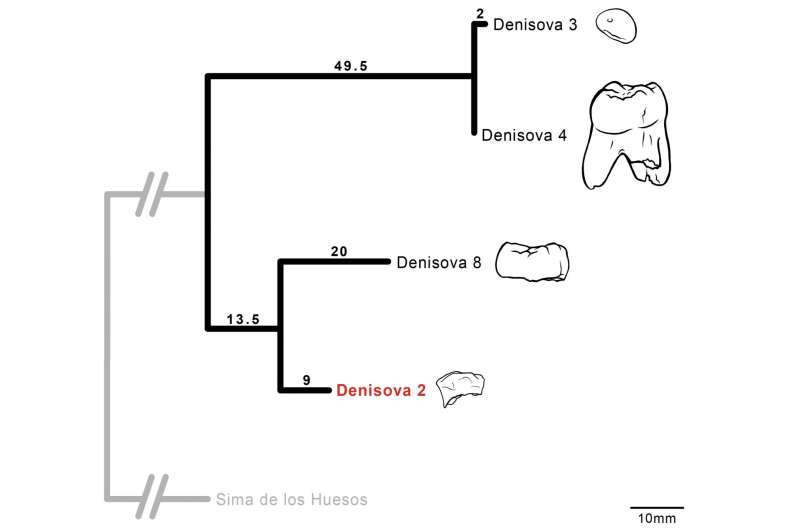July 10, 2017 report
A fourth Denisovan fossil has been identified

(Phys.org)—A team of researchers with members from Russia, Germany, Canada and Italy studying a tooth found in Denisova cave back in 1984 has found that it belonged to a young Denisovan girl and that it was a baby tooth. In their paper published on the open access site Science Advances, the team also notes that DNA evidence suggests the girl lived approximately 20,000 years before other Denisovans living in the same cave who also left behind fossils that have been found and identified.
The Denisovans are believed to be extinct relatives of Neanderthal. The newly identified fossil brings to just four the number of Denisovan fossils that have been found and identified—one finger and three teeth. Because of the location of Denisova cave, which is located in Siberia, researchers believe the hominins lived in eastern parts of Eurasia, whereas Neanderthal are believed to have lived in western Eurasia.
The Denisovans first came to light back in 2010 when a team of researchers studying a finger bone found in Denisova cave managed to extract a small bit of DNA. Analysis of the sample showed that it was not Neanderthal as had been suspected but was instead from a different early hominn. They called it Denisova after the cave in which it was found. An even closer look at the DNA samples conducted later on showed that the Denisovans split away from Neanderthals during the time frame 470,000 to 190,00 years ago. Subsequent digging in the cave led to the discovery of two teeth that were also identified as Denisovan. The newly identified fourth fossil is believed to have come from a girl approximately 10 to 12 years old.

The researchers suggest the tooth fossil might be even older than initial study has suggested—it was found in a layer in the cave where other material has been dated as far back as 227,000 years ago. The mutation rate of the DNA, on the other hand, suggests the child likely lived sometime between 20,000 and 40,000 years earlier than the Denisovans that left behind the other fossils that have been found. The researchers also note that the DNA of the newly identified fossil and that of the others are a very close match, suggesting (because of the time difference) they were all likely from a small group with limited opportunities for breeding with others.

More information: Viviane Slon et al. A fourth Denisovan individual, Science Advances (2017). DOI: 10.1126/sciadv.1700186
Abstract
The presence of Neandertals in Europe and Western Eurasia before the arrival of anatomically modern humans is well supported by archaeological and paleontological data. In contrast, fossil evidence for Denisovans, a sister group of Neandertals recently identified on the basis of DNA sequences, is limited to three specimens, all of which originate from Denisova Cave in the Altai Mountains (Siberia, Russia). We report the retrieval of DNA from a deciduous lower second molar (Denisova 2), discovered in a deep stratigraphic layer in Denisova Cave, and show that this tooth comes from a female Denisovan individual. On the basis of the number of "missing substitutions" in the mitochondrial DNA determined from the specimen, we find that Denisova 2 is substantially older than two of the other Denisovans, reinforcing the view that Denisovans were likely to have been present in the vicinity of Denisova Cave over an extended time period. We show that the level of nuclear DNA sequence diversity found among Denisovans is within the lower range of that of present-day human populations.
Journal information: Science Advances
© 2017 Phys.org





















